Running The Workflow
Run Workflow Step
Once all steps have been added and configured, click Create to go to the next step of running the workflow. Delegate validates every field for proper configuration upon workflow creation, update, or when attempting to run the workflow. The browser will automatically navigate to the first validation message.
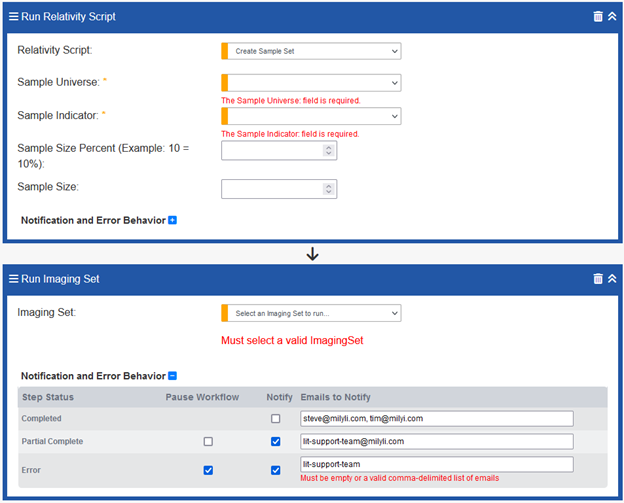
Once the workflow is saved successfully, the workflow is ready to run. Click Run at the top of the workflow to begin execution. The workflow will be successfully queued with the Delegate agent and the first step will begin execution. The browser will automatically scroll down to the first step in the workflow and display an indicator for which step is processing.
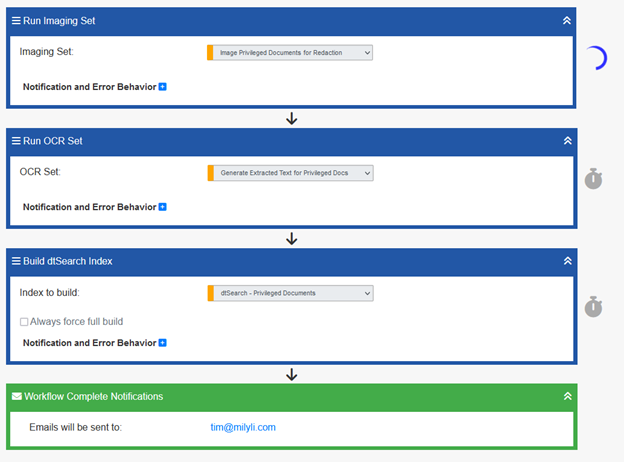
The Workflow Run Details will provide information about the current workflow execution.
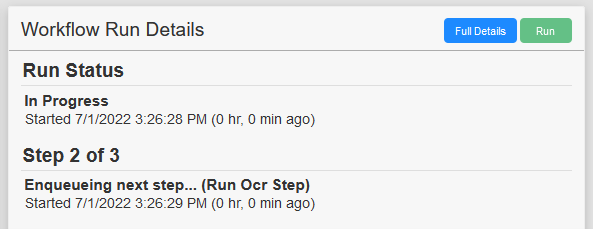
Clicking on Full Details presents a more in depth set of information about the current workflow execution.

As the workflow progresses, status is automatically updated and can be checked at any time. There is no need to remain on the workflow for the duration.
At the end of the workflow, the workflow complete notification will trigger, and if configured, provide a summary of the tasks in the workflow.
Paused Workflows
When a step is configured to pause the workflow on error or partial complete, the workflow will be placed into a paused state. If notifications are configured for the workflow, end users will be notified immediately that something has failed to process, and the workflow has paused.
In addition to this, several visual cues are provided in the software. The status on the Automated Workflows tab will update to display “errored.”

On the workflow, the step that resulted in the pause will get a pause icon next to it.
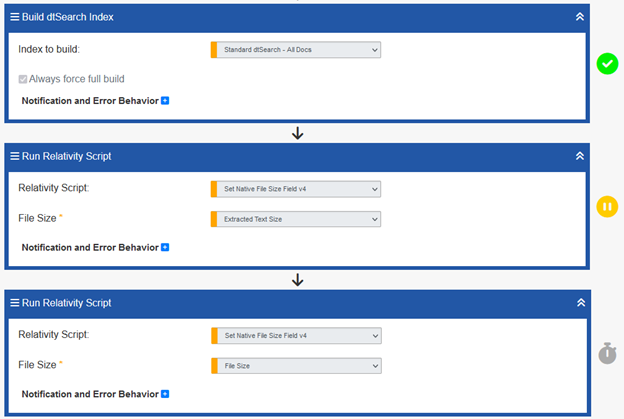
In the workflow full details, a stopped icon is displayed next to the failed step along with the friendly message for the error. The full details of the error are available via the notification or by downloading the log from the Configuration tab under the Delegate Admin tab.
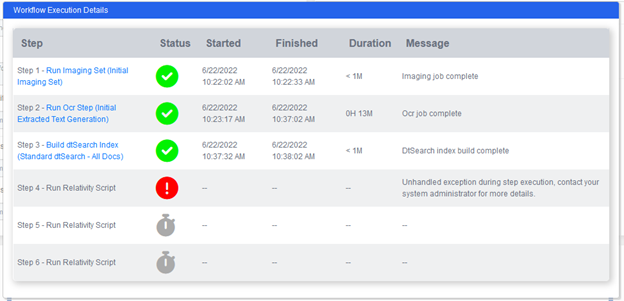
The pause state provides a range of options for next steps. On the Workflow Run Details section of the workflow page, two buttons are available that provide 4 different options.

The options are provided so that your team can make the right decision before continuing the workflow. In some cases, failures may be due to misconfiguration or bad data. These require manual intervention within the workspace before the workflow can continue. In some cases, it may be that the wrong resource was selected resulting in an error and the workflow needs to be edited and re-run.
These options provide flexibility when deciding how the error should be handled.
| Option | Description |
|---|---|
| Stop | Cancels the current workflow execution and allows the workflow to be edited, modified, deleted, or re-run. |
| Restart from Beginning | If updates to the process need to be made and run sequentially, this option allows you to start again from the beginning ensuring that dependent data is in the state it needs to be for each next step. |
| Restart from Current Step | Sometimes a minor configuration or setup option needs to be corrected for the resource configured for the failing step. When this happens, making that correction and restarting from the current step prevents the rerunning of existing work product. |
| Resume at Next Step | Occasionally, there may not be an immediate or obvious fix for the resource defined in the failing step. When this happens, if the remaining steps are not dependent on this step, you may want to continue the workflow. |
Manually Pause Workflow
Users can pause a running workflow manually. When paused, the currently executing step will complete, but the workflow will halt, preventing progression to the next step. If the last step is running when the workflow is paused, it will finish the step and remain in a paused state until manually resumed.

Run History
Every time a workflow is run a new entry is added to the workflow history. At the bottom of the workflow is a Run History table providing details about the step history for each workflow execution.

Clicking on the View Details button displays a modal with step details for that run. In the example below, the first run of this workflow included two steps. The workflow was edited, and a new step was added resulting in the second run executing three steps.
First Run:

Second Run:
